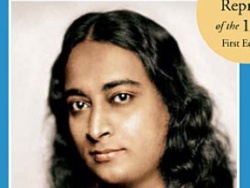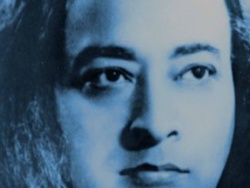
Paramahansa Yogananda was a born avatar and great saint.
Who is Paramhansa Yogananda? Paramhansa Yogananda, also known as Swami Yogananda and sometimes as Swami Paramhansa Yogananda, was the first yoga master of India to take up permanent residence in the West.
Born Mukunda Lal Ghosh in Gorakhpur, India, in January 1883, Yogananda intensely longed for God from his earliest childhood. As he relates in Autobiography of a Yogi, he spent much of his youth seeking out many different saints. He met his guru, Swami Sri Yukteswar, in Varanasi around the year 1912 and frequented Yukteswar’s hermitage in Serampore, Bengal while earning an A.B. degree from Calcutta University.
Shortly after graduation, in July 1914, Yukteswar initiated Mukunda into the ancient Swami order at which time the young man assumed the monastic name Swami Yogananda (or, more properly, Yogananda of the Giri branch of the Swami order). It was as Swami Yogananda that he arrived in America in 1920 and proceeded to travel throughout the United States on his “spiritual campaigns” for the next four years. During this time, hundreds of thousands filled the largest halls in major American cities to see the yoga master from India.
In 1925, after his campaigns Swami Yogananda acquired and settled into Mount Washington Estates in Los Angeles, CA as the headquarters of what would become a worldwide work. It was here he gathered disciples and trained many of them as teachers and ministers, including Ananda’s founder, Swami Kriyananda.
In 1935-1936 he made a return visit to India. During this time Sri Yukteswar bestowed on him the higher monastic title of Paramhansa, literally “supreme swan.” Thus, Swami Yogananda became Paramhansa Yogananda, the name by which he is known today. (The title Paramhansa supersedes Swami, thus he is properly referred to as Paramhansa Yogananda rather than Swami Paramhansa Yogananda.)
After returning to America in 1936, Yogananda continued to lecture and write up to his passing in 1952. Although his impact on western culture was truly impressive during his lifetime, his lasting spiritual legacy has been even greater. His Autobiography of a Yogi, first published in 1946, helped launch a spiritual revolution in the West. Translated into more than fifty languages, it remains a best-selling spiritual classic to this day.
Before embarking on his mission to the West, he received this admonition from his teacher, Swami Sri Yukteswar:
The West is high in material attainments, but lacking in spiritual understanding. It is God’s will that you play a role in teaching mankind the value of balancing the material with an inner, spiritual life.
The Path of Self-Realization
The true basis of religion is not belief, but intuitive experience. Intuition is the soul’s power of knowing God. To know what religion is really all about, one must know God.
—Paramhansa Yogananda from The Essence of Self-Realization
The lasting contribution brought by Yogananda to the West is the non-sectarian, universal spiritual path of Self-realization.
Yogananda gave this definition to the term Self-realization:
Self-realization is the knowing in all parts of body, mind, and soul that you are now in possession of the kingdom of God; that you do not have to pray that it come to you; that God’s omnipresence is your omnipresence; and that all that you need to do is improve your knowing.
As the means of attaining this exalted spiritual state Yogananda initiated his followers into the ancient technique of Kriya Yoga, which he called the “jet-airplane route to God.”


















